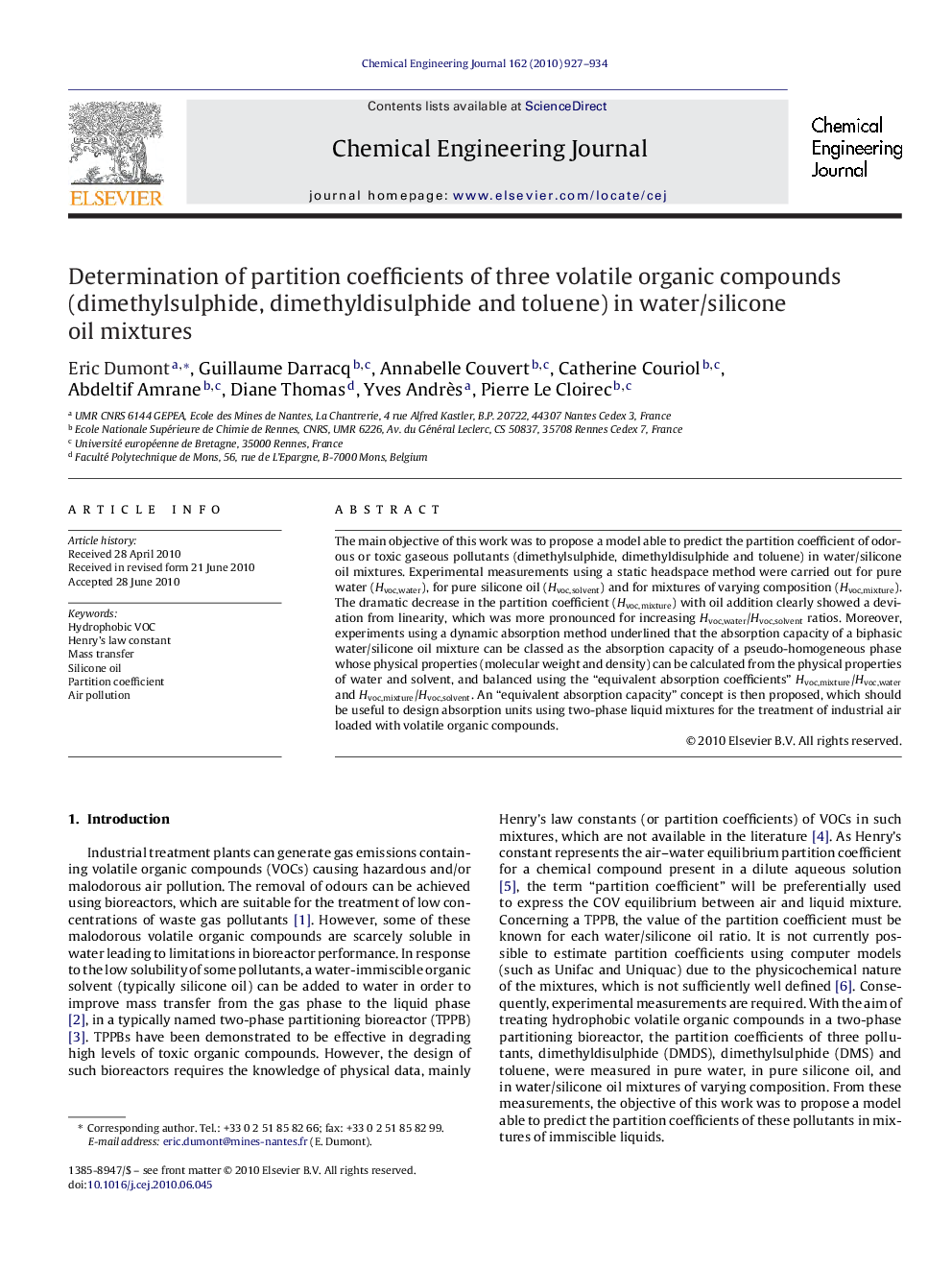| Article ID | Journal | Published Year | Pages | File Type |
|---|---|---|---|---|
| 152180 | Chemical Engineering Journal | 2010 | 8 Pages |
The main objective of this work was to propose a model able to predict the partition coefficient of odorous or toxic gaseous pollutants (dimethylsulphide, dimethyldisulphide and toluene) in water/silicone oil mixtures. Experimental measurements using a static headspace method were carried out for pure water (Hvoc,water), for pure silicone oil (Hvoc,solvent) and for mixtures of varying composition (Hvoc,mixture). The dramatic decrease in the partition coefficient (Hvoc,mixture) with oil addition clearly showed a deviation from linearity, which was more pronounced for increasing Hvoc,water/Hvoc,solvent ratios. Moreover, experiments using a dynamic absorption method underlined that the absorption capacity of a biphasic water/silicone oil mixture can be classed as the absorption capacity of a pseudo-homogeneous phase whose physical properties (molecular weight and density) can be calculated from the physical properties of water and solvent, and balanced using the “equivalent absorption coefficients” Hvoc,mixture/Hvoc,water and Hvoc,mixture/Hvoc,solvent. An “equivalent absorption capacity” concept is then proposed, which should be useful to design absorption units using two-phase liquid mixtures for the treatment of industrial air loaded with volatile organic compounds.
